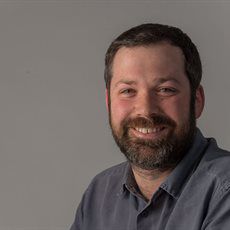We congratulate our two Research Award winners for 2022:
- Dr Cristina Ronchi (Birmingham)
- Dr Scott Akker (London) and Dr Daniel Tennant (Birmingham)
Below are the lay summaries of their research proposals and we look forward to hearing how they get on in 12 months’ time when they submit their final reports.
-

-
Dr Cristina Ronchi
Recipient of the Elliot Dallen and Cerys Akarca Awards for ACC Research (£10,000 and £2,435 respectively)
Lay Summary
Circulating cell-free DNA-based biomarkers for improved management of adrenocortical carcinoma
Adrenocortical carcinoma (ACC) is a rare and generally highly aggressive cancer. About half of the patients who have an ACC removed see the tumour return within 2 years, and the majority die within 5 years of diagnosis. Recent developments in genetics, biochemistry, and imaging techniques have set new standards for the diagnosis and treatment of ACC. Nevertheless, there are still critical unmet clinical needs for patients with ACC:
- No markers are available that can help to predict clinical outcomes at the time of the diagnosis
- Follow-up requires frequent imaging that is expensive, results in increased radiation exposure and cannot always answer diagnostic questions.
In my research, I aim to address these needs and to improve the clinical outcome of patients with ACC through the establishment of tailored management for individual patients. In the last 3 years, I developed a method for the evaluation of small fragments of genetic information (=DNA) released from tumour cells into the blood. This approach allowed me to investigate blood samples from a first group of patients with ACC and obtain encouraging preliminary results. Now, I intend to investigate a new cohort of patients during long term follow-up (up to 12 months). This is needed to validate the clinical utility of my initial findings. Specifically, I will collect blood samples from new patients with ACC before and during the surveillance after surgery. The levels of the DNA fragments will be correlated with clinical data and standard radiological imaging reports and, eventually, specific alterations will be investigated in DNA fragments.
In this new phase of the study, I also intend to add a new type of analysis of the DNA fragments, in order to further increase the likelihood of detecting molecular alterations that could be used for monitoring of the disease.
The results will be analysed in order to identify markers that could
- Better predict the clinical course of ACC patients, and
- Recognize disease relapses and/or progression
This method might represent a modern tool to better distinguish patients with a good or bad prognosis and simultaneously improve the monitoring of the disease. I have access to one of largest series of well-characterized ACC patients in the UK and to cutting-edge technologies, and I have longstanding expertise in genetic studies of adrenal tumours. This makes me ideally suited to perform these analyses.
This study will serve to underpin further recruitment of samples within the UK and Europe and major funding applications.
-


-
Dr Scott Akker & Prof Daniel Tennant
Lay Summary
Comprehensive metabolite assessment in carriers of SDHx mutations (awarded £5,500)
People with a phaeochromocytoma or paraganglioma (PPGL) tumour caused by a mutation in one of the subunits of the succinate dehydrogenase (SDH) gene are aware that:
(i) their mutation was inherited,
(ii) only some family members will also “carry” the mutation, and that
(iii) of those “carriers” of the mutation, only some develop a tumour whereas others do not.Important unanswered questions include:
(I) Why do only some carriers develop a tumour?
(II) Is there a “marker” e.g. a molecule from a blood sample, that could indicate or predict whether a carrier is going to develop a tumour?
(III) Is there anything that someone carrying the gene mutation can do to reduce their risk of developing a tumour?This project proposal is aimed at Question (II) above, specifically to find out whether there is a particular molecule that is at a higher level in the blood of carriers who have never had a PPGL identified on their surveillance tests for a tumour, compared to people who do not carry a mutation in the SDH gene. This group of people, the “carriers”, has never been studied in much detail despite making up the majority of SDH patients in a surveillance clinic, all facing uncertainty about whether they will develop a tumour.
The molecules in the blood that we will measure are found in almost all cells of the body as a result of the usual processes by which cells generate energy to perform their functions. We call these molecules “metabolites”. The metabolites can be measured from blood in the laboratory reliably (a validated, standardised, reproducible method.)
What consented participants will be asked to do:
- Fast from midnight the evening prior to a scheduled blood test (water and medications can continue).
- Have a cannula (short plastic tube for access to veins) inserted in preparation for the blood test.
- Rest flat, or as close to flat as is comfortable, for 20-30 minutes.
- Have 10 mL blood taken, after which the cannula is removed.
To interpret the blood test results in the SDH mutation carriers, we also need to take blood samples in the same way from people without the mutation, to compare results. We plan to ask our patients, the carriers, to approach their family members (1st-degree relatives not carrying a mutation in SDH) and they will also be consented to participate. Other comparator groups will consist of people with a PPGL tumour that either is or is not related to an SDH mutation, and people with a mutation in a different gene, RET, which can cause phaeochromocytoma but which we think might have different changes in metabolites.
Our research group has access to over 40 multi-generational families carrying an SDHB mutation and a number of patients with mutations in other SDH subunits, already consented to participate in research that investigates different aspects of their inherited condition. Therefore, we are optimistic about being able to achieve our goal of finding out, in the first instance, whether there is a marker in the blood of SDH mutation carriers that is easy to test and that distinguishes them from people who do not carry the SDH mutation. If there is such a marker, then we will make plans for further research that can hopefully improve the tumour surveillance experience